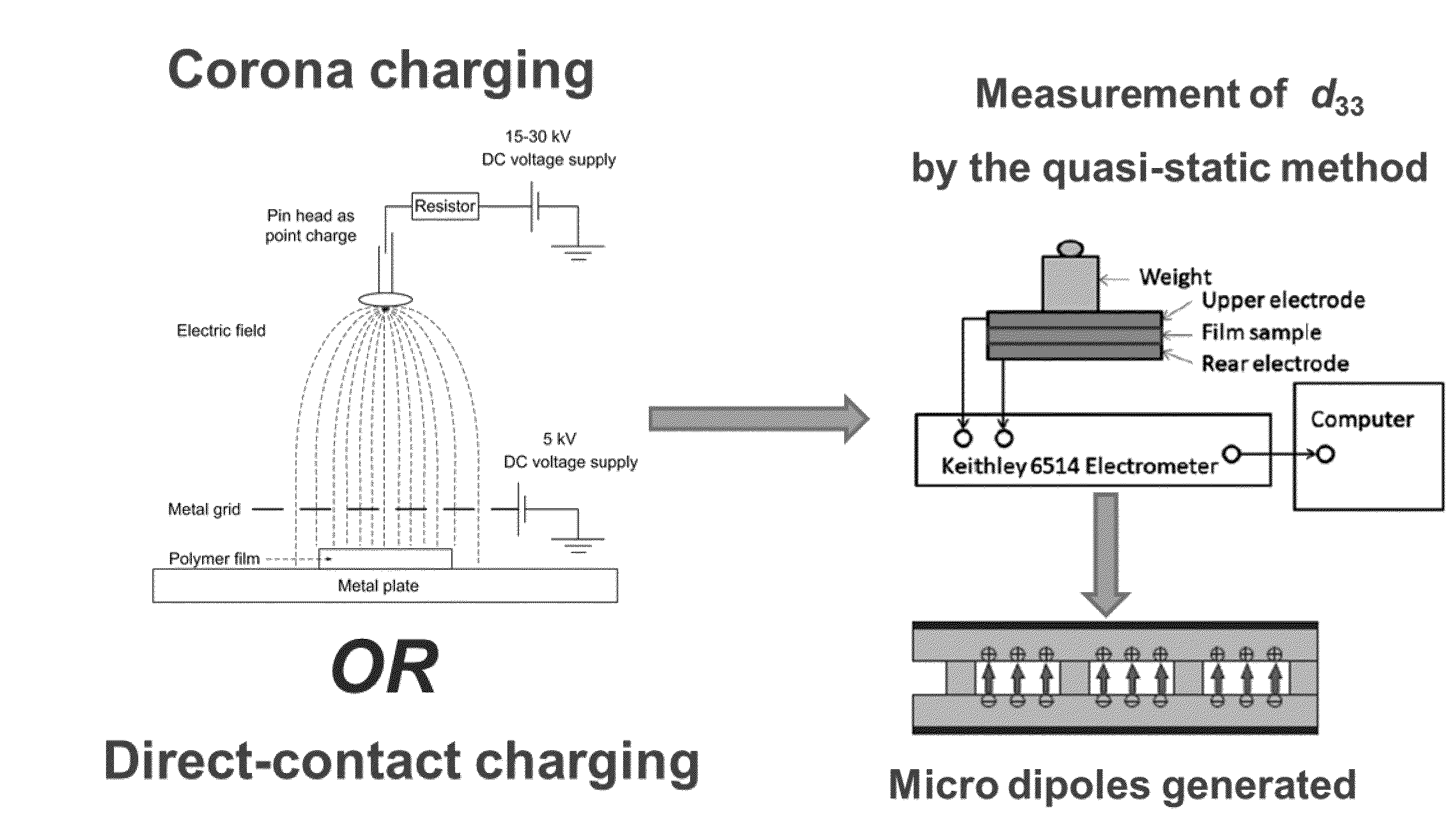Polymer foam-based piezoelectric materials and method of manufacture
a piezoelectric material and polymer foam technology, applied in piezoelectric/electrostrictive/magnetostrictive devices, piezoelectric/electrostriction/magnetostriction machines, electrical transducers, etc., can solve the problems of poor charge-storage stability, low operation temperature, and limited method
- Summary
- Abstract
- Description
- Claims
- Application Information
AI Technical Summary
Benefits of technology
Problems solved by technology
Method used
Image
Examples
example 1
Materials
[0105]50 μm thick and 100 μm thick COC film (Topas 6017, Topas Company) were used as base polymers for the manufactured compounds. The glass transition temperature of this polymer is 180° C.
[0106]Fabrication of COC Ferroelectrets Film
[0107]The main steps of the fabrication process are depicted in FIG. 5. The grid with rectangle array was created using a CO2 laser (VersaLASER, Universal Laser Systems). Each rectangle has a dimension of 3 mm×31 mm and the spacing between two adjacent rectangles is 1 mm.
[0108]Five layers of COC films (35 mm×35 mm) or grids were arranged in sequence as shown in FIG. 5. Note that the top and bottom COC films with a 100 nm thick aluminum electrodes on one side. Then, the whole assembly was placed in a pressure vessel. After saturation with CO2 at 120° C. and 10 Mpa for 12 h, the pressure was slowly released. Note that the bonding temperature used was 60° C. lower than the glass transion temperature of COC. This benefited from the CO2 enhanced cha...
example 2
Materials
[0116]High-temperature grade COC film (Topas 6017, thickness 50 and 100 μm) was purchased from Topas Advanced Polymers. The polymer has a glass transition temperature of 180° C.
[0117]Fabrication of COC Ferroelectrets Film
[0118]The COC ferroelectrets consisted of five layers of COC films. The top and bottom layers were COC films with 100 nm-thick aluminum electrodes on one side. Two of the five layers were patterned with rectangle channel arrays generated by machining of the 100 μm-thick COC film using a CO2 laser (VersaLASER, Universal Laser Systems). The two patterned COC films had the same dimensions, that is, the same length and width of the rectangles and the same spacing between the rectangular cavities. However, the two patterns were offset by the width of half of the total width of the cavity and spacing (see FIGS. 3, 5 and 7).
[0119]The five layers (35 mm×35 mm) were then stacked in sequence (plain-patterned-plain-patterned-plain) and placed between two stainless-ste...
PUM
 Login to View More
Login to View More Abstract
Description
Claims
Application Information
 Login to View More
Login to View More - R&D
- Intellectual Property
- Life Sciences
- Materials
- Tech Scout
- Unparalleled Data Quality
- Higher Quality Content
- 60% Fewer Hallucinations
Browse by: Latest US Patents, China's latest patents, Technical Efficacy Thesaurus, Application Domain, Technology Topic, Popular Technical Reports.
© 2025 PatSnap. All rights reserved.Legal|Privacy policy|Modern Slavery Act Transparency Statement|Sitemap|About US| Contact US: help@patsnap.com



